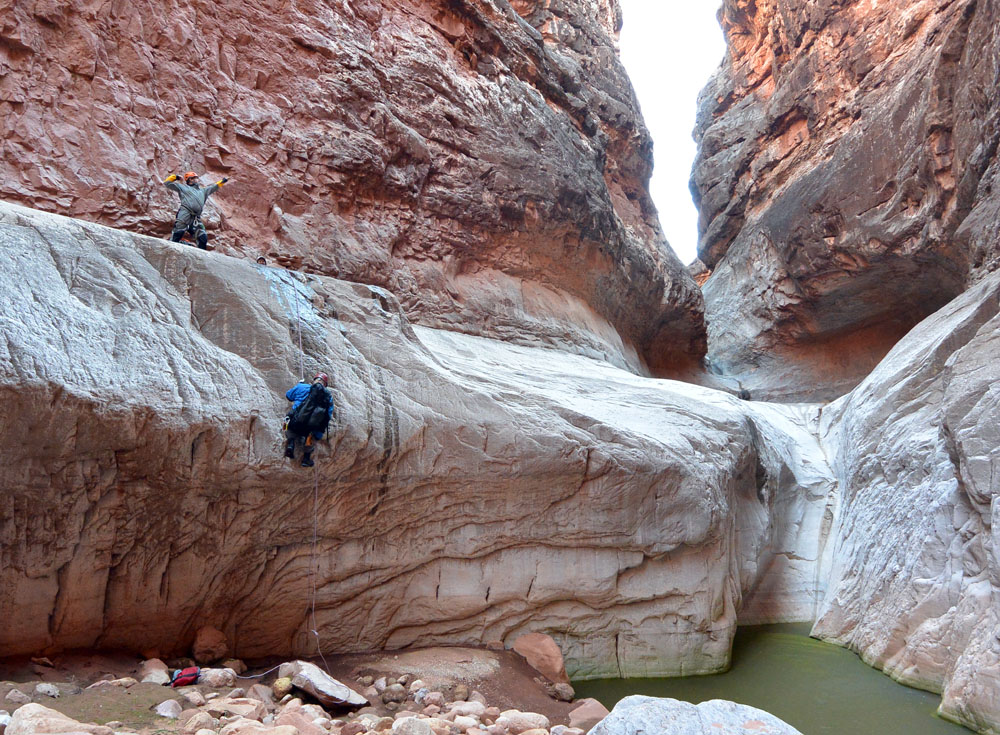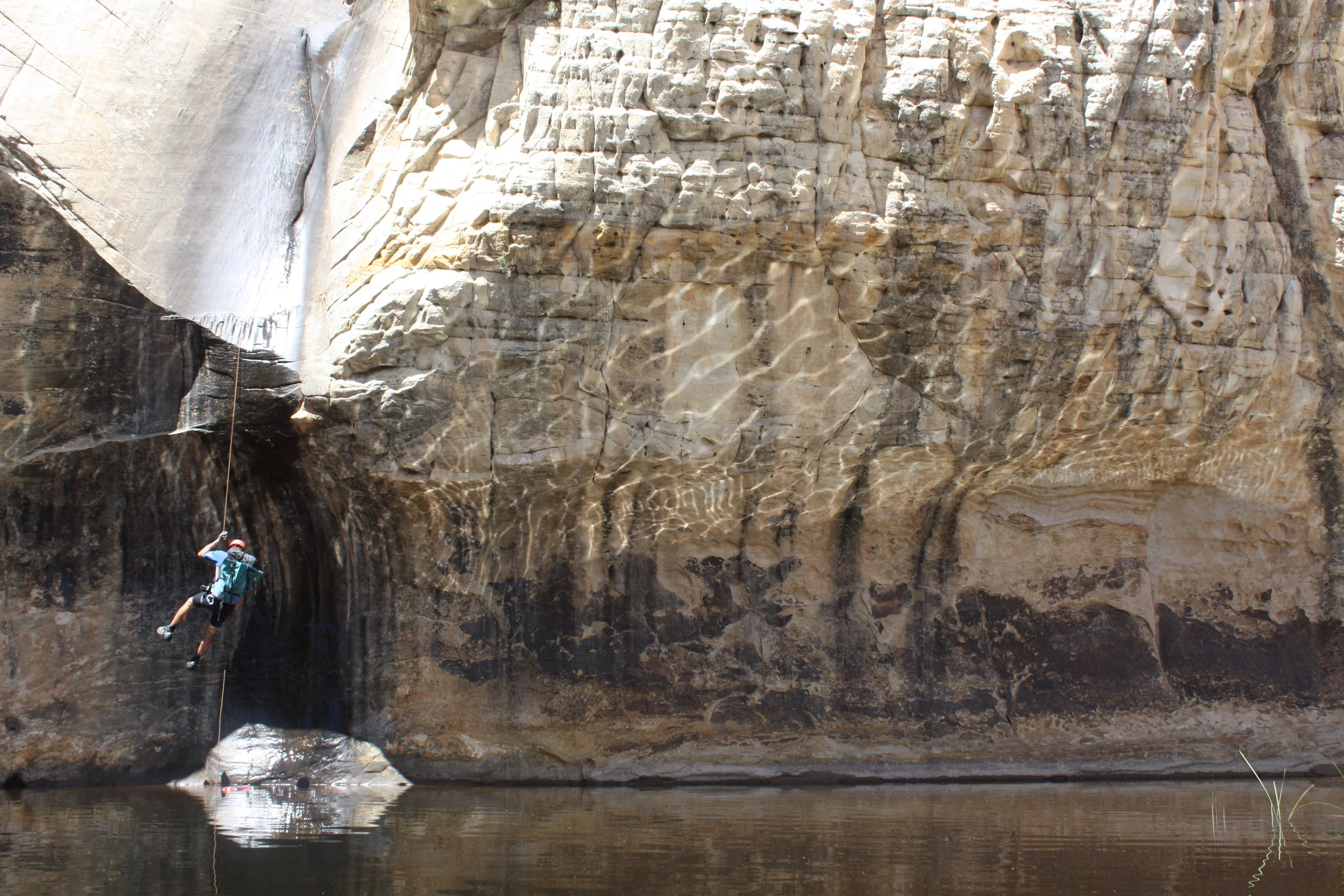
Mitigating risk
Canyoneering is NOT an extreme sport and involves little risk when practiced correctly. That said, canyons do present a variety of opportunities for people to hurt or kill themselves. Unlike climbing, which requires a certain amount of competence to get high enough to hurt oneself, any darn fool can wander down a canyon and find trouble. When that fool pulls the first rappel rope, he commits himself to descending the canyon, come heck or high water.
On this page, you'll find my recommendations on how to avoid canyoneering accidents, incidents, and tragedies.
Staying Alive
From Beginners to Experienced Canyoneers

Advice For Everyone
Respect the ever-changing nature of Utah's canyons. They change, considerably, in a short period of time. Carry extra gear. Be prepared for the canyon to be different than described, or different than the last time you went through.
For Beginners
Don't be a beginner that's led by a beginner. The majority of accidents occur to people descending their first or second canyon, people unfamiliar with canyoneering and the skills required, often descending in large groups, led by someone who has only a vague idea of what they are doing. Don't do this. Instead, hook up with experienced canyoneers who can show you how canyoneering is done. Find a competent person to lead the group.
Know before you go. You'd be surprised how many people start down a canyon with very little idea of what they will encounter. Use this website, and compare details against other sources. In Zion, ask at the Backcountry Desk about the latest conditions. Pine Creek, in particular, changes dramatically depending on the water level. What was a delightful romp the week before could be a desperate struggle against hypothermia the next Saturday when you bring Uncle Bob and his ten kids in blue jeans and t-shirts into its watery maw.
Do the right thing. Some of the adventures on this website are appropriate for beginners - many are not. Choose your route based on your skills and the skills of your group. This is no contest; if you are in it for the challenge and adrenaline, you are in the wrong sport...take up sport climbing or motocross.
Bring the right stuff. Skimping on gear is not a good idea. Everyone should have a helmet, a harness and their own rappel device. When required, everyone should have a wet suit or dry suit. Everyone should be competent to rappel on the rope chosen for the adventure.
Get some skills. Canyoneering requires specific skills. Learn them, either by taking a course or by hanging out with more experienced canyoneers.
Don't train people in the canyon. People who don't know how to rappel should be trained in a safe, comfortable environment - not in a canyon.
Wear a helmet. Sure, you might think you look like a dork, but you'll look even worse lying in a hospital bed being fed through tubes.
Canyoneering is not climbing.
Don't mistake a solid climbing skill set for the one you'll need to safely get through a Colorado Plateau canyon. They're completely different.
For Experienced Climbers
Wear a helmet. Think tubes (see above).
Avoid hubris. Good traditional climbing skills are the basis for good canyoneering skills, but there's more stuff to learn. Canyoneering is not climbing - don't kid yourself. Easy canyons are straightforward and will teach you little, and will NOT prepare you for more challenging canyons. Canyoning with experienced canyoneers is your best bet. I am often amazed at how bad my competent, experienced trad-climbing friends are at canyoneering.
Keep your eyes open. There are often multiple anchors available at a drop - consider all options before committing to one or the other. Just as lost hikers leave cairns, canyoneers who make bad choices also leave slings.
Check the anchors. Canyons are often descended by folks with really poor skills. This leads to a lot of poorly chosen, poorly placed and poorly rigged anchors. Check anchors and rigging before using them, re-rig when needed, and remove unhelpful slings.
For Experienced Canyoneers
Things are different here. Colorado Plateau canyons are unlike canyons elsewhere in the world. Take it easy and get a feel for the lay of the land before charging off to do the hard ones. The popular canyons in Zion are the most like 'civilized' canyons elsewhere. In other Utah canyons, Wilderness values are emphasized and bolts are rarely found - and this is a good thing!



